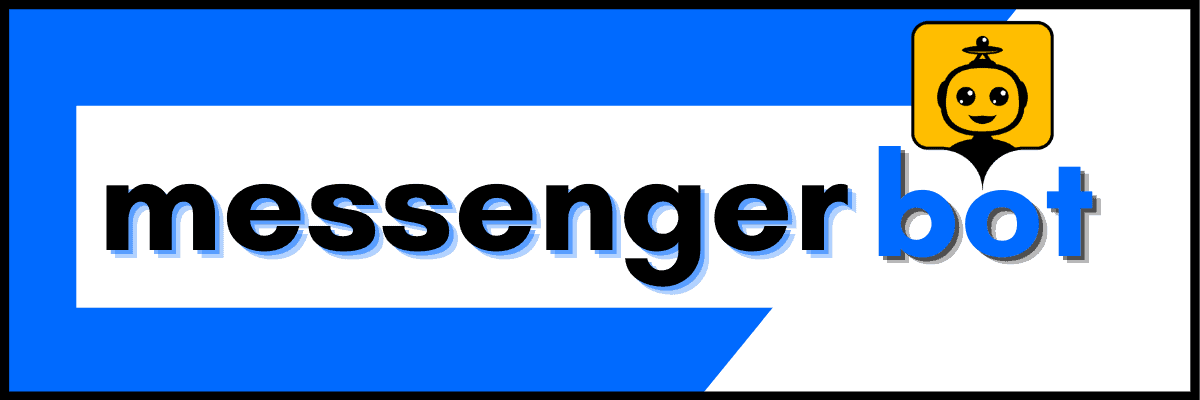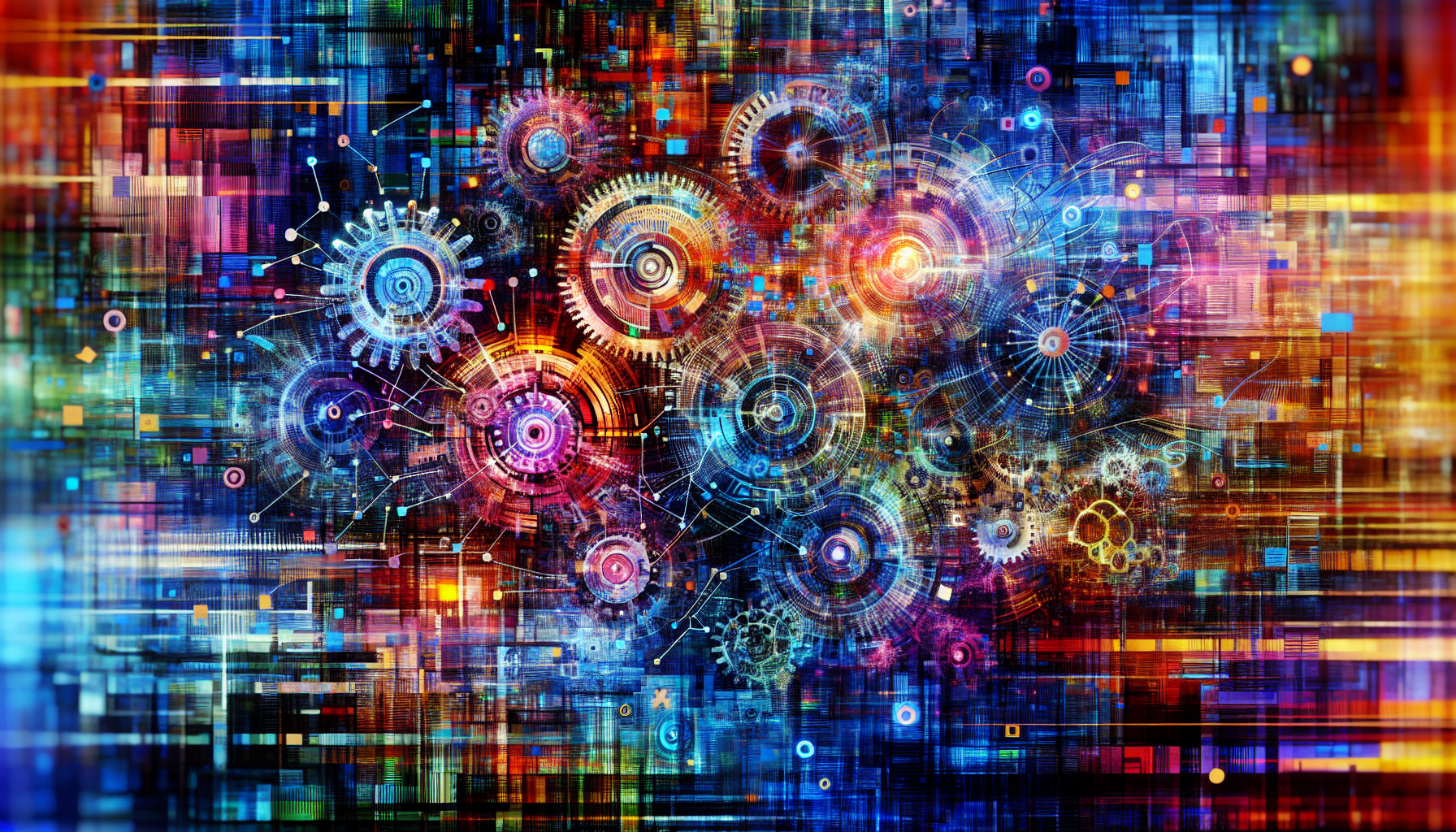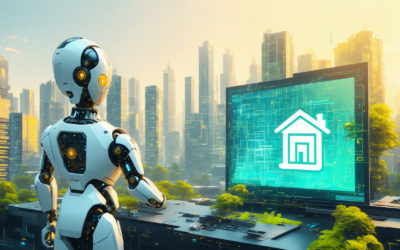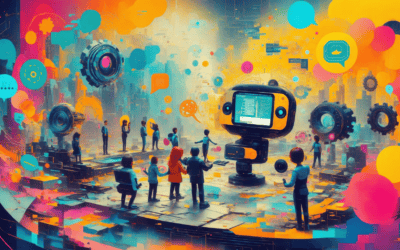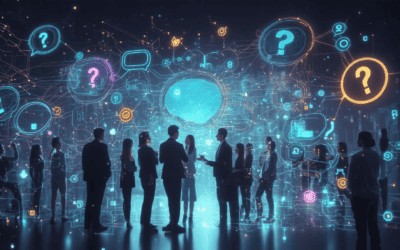In the rapidly evolving landscape of digital communication, understanding rule-based chatbots is essential for businesses looking to enhance customer interaction and streamline service delivery. This article delves into the fundamental aspects of rule-based chatbots, exploring their key features and how they differ from other types of chatbots. We will examine the four primary types of chatbots, providing clarity on the distinctions between rule-based and menu-based systems. Additionally, we will analyze whether ChatGPT operates on a rule-based framework and discuss the limitations inherent in rule-based chatbots. By the end of this article, you will gain valuable insights into real-world applications and examples of rule-based chatbots, equipping you with the knowledge to make informed decisions in chatbot development. Join us as we unravel the complexities of rule-based chatbots and their role in the future of automated communication.
What is a rule-based chatbot?
Rule-based chatbots are a type of conversational agent designed to interact with users through predefined rules and structured dialogues. They operate primarily on a dialog tree framework, which allows them to follow a set path based on user inputs. Here are key aspects of rule-based chatbots:
Understanding the Basics of Rule-Based Chatbots
1. Structure and Functionality: Rule-based chatbots utilize a series of if-then statements and regular expressions to interpret user queries and generate appropriate responses. This structured approach enables them to handle specific tasks effectively, such as providing information about the weather, scheduling appointments, or answering frequently asked questions.
2. Limitations: While rule-based chatbots can simulate human-like conversations within a limited context, they often struggle with understanding complex queries or handling unexpected inputs. Their effectiveness is largely dependent on the comprehensiveness of the predefined rules.
3. Use Cases: Common applications of rule-based chatbots include customer service, where they can quickly address routine inquiries, and educational platforms, where they guide users through learning modules. For example, Messenger Bot employs rule-based logic to assist users in navigating its features and services.
Key Features of Rule-Based Chatbots
4. Advantages: These chatbots are relatively easy to develop and implement, making them a cost-effective solution for businesses looking to enhance user engagement without extensive investment in AI technology.
5. Conclusion: Rule-based chatbots serve as a practical tool for automating interactions in specific contexts, but their reliance on predefined rules limits their adaptability compared to more advanced AI-driven chatbots.
For further reading on the effectiveness and applications of rule-based chatbots, refer to sources such as IBM AI Chatbots and Salesforce Service Cloud Bots.
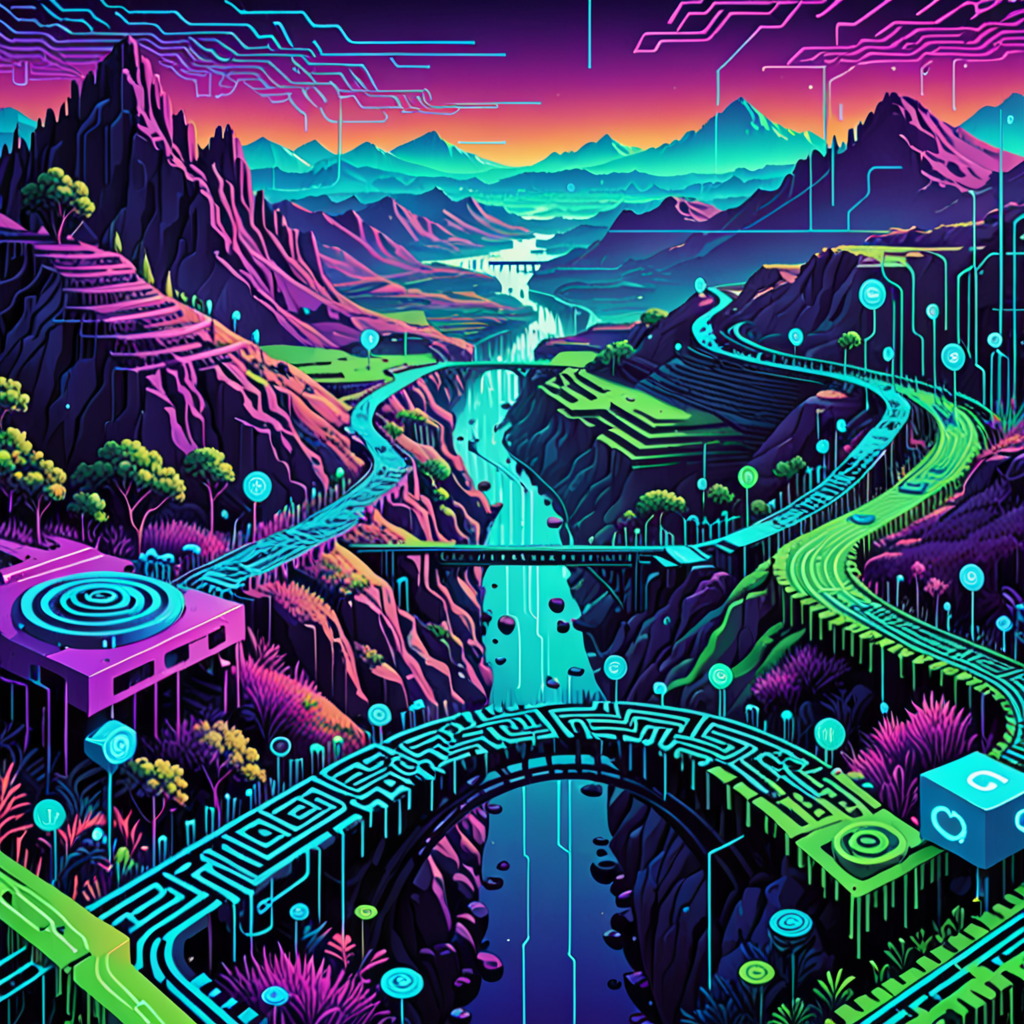
What are the 4 types of chatbots?
Understanding the different types of chatbots is essential for businesses looking to enhance their customer interactions. Here are the four primary types:
- Menu-based Chatbots: These are the simplest form of chatbots that guide users through a predefined set of options. Users select from a menu of choices, making it easy for the chatbot to provide relevant responses. This type is often used in customer service for straightforward inquiries.
- Rule-based Chatbots: Building on the menu-based model, rule-based chatbots utilize a decision tree framework. They operate on a series of if/then rules to determine responses based on user inputs. While they can handle more complex interactions than menu-based bots, they still lack the ability to learn from conversations.
- AI-powered Chatbots: These advanced chatbots leverage artificial intelligence and natural language processing (NLP) to understand and respond to user queries more effectively. They can learn from interactions, improving their responses over time. AI-powered chatbots are commonly used in applications like customer support and personal assistants, such as Messenger Bots, which integrate with platforms like Facebook Messenger to provide seamless user experiences.
- Hybrid Chatbots: Combining the strengths of both rule-based and AI-powered chatbots, hybrid chatbots can switch between scripted responses and AI-driven interactions. This versatility allows them to handle a wider range of inquiries while still providing accurate information when needed. They are particularly effective in complex customer service scenarios where both structured and open-ended questions arise.
For further reading on chatbot types and their applications, refer to sources like IBM AI Chatbots and Salesforce Service Cloud Bots.
Rule-Based Chatbots vs. Other Types of Chatbots
When comparing rule-based chatbots to other types, it’s important to understand their unique characteristics and limitations. Rule-based chatbots are designed to follow specific rules and scripts, making them reliable for predictable interactions. However, they lack the adaptability of AI-powered chatbots, which can learn from user interactions and improve over time. This difference is crucial for businesses that require more dynamic customer engagement strategies.
For instance, while a rule-based chatbot can efficiently handle FAQs and straightforward requests, an AI-powered chatbot can engage in more nuanced conversations, providing personalized responses based on user history and preferences. This capability is particularly beneficial in enhancing customer satisfaction and loyalty.
To explore more about how these chatbots can transform customer service, check out our article on best AI chatbots and their impact on customer engagement.
What is the difference between rule-based chatbot and menu-based chatbot?
Understanding the distinction between rule-based chatbots and menu-based chatbots is crucial for businesses looking to enhance their customer interactions. Each type of chatbot serves different purposes and offers unique functionalities that can significantly impact user experience.
Rule-Based Chatbot Architecture Explained
Rule-based chatbots operate on a foundation of predefined rules and scripts. They are designed to respond to user inputs by matching specific keywords or phrases with programmed responses. This architecture allows them to handle straightforward queries effectively, making them suitable for applications like customer service.
- Definition: Rule-based chatbots rely on a set of programmed responses that are triggered by user inputs. They do not learn from interactions but follow a strict set of guidelines.
- Functionality: These chatbots can provide a conversational experience by delivering quick answers to frequently asked questions. However, their responses are limited to the pre-written content, which can restrict their effectiveness in handling complex queries.
- Limitations: The inability to adapt or learn from user interactions means that rule-based chatbots may struggle with nuanced conversations or variations in language.
- Example: A common implementation of rule-based chatbots is in customer service, where they efficiently address standard inquiries.
Comparing Rule-Based and Menu-Based Chatbots
In contrast, menu-based chatbots guide users through a series of predefined options, allowing them to select from a list of choices. This structured approach simplifies user interaction but comes with its own set of advantages and limitations.
- Definition: Menu-based chatbots present users with a list of options to navigate the conversation, making it easier for users to find the information they need.
- Functionality: By providing clear choices, these chatbots reduce confusion and streamline the user experience, particularly for those unsure of how to phrase their questions.
- Limitations: While effective in guiding users, menu-based chatbots can frustrate those seeking specific information not covered in the available options. They also lack the flexibility of natural language processing.
- Example: Many customer support systems utilize menu-based chatbots to direct users to the appropriate department based on their selections.
In summary, while rule-based chatbots offer a more conversational approach, they are limited by their programming. In contrast, menu-based chatbots provide structured navigation but may not accommodate all user inquiries. Understanding these differences can help businesses choose the right type of chatbot for their specific needs, enhancing user experience and operational efficiency. For further insights, refer to studies on chatbot effectiveness in customer service by sources such as the IBM AI Chatbots and Microsoft AI Chatbot.
Is ChatGPT Rule-Based?
To understand whether ChatGPT is a rule-based system, we need to delve into its underlying functionality. ChatGPT is not a rule-based system; rather, it employs advanced machine learning techniques, specifically a transformer architecture, to generate responses. Unlike traditional rule-based systems that rely on predefined rules and logic to process inputs, ChatGPT utilizes deep learning to understand and generate human-like text based on context and patterns in the data it was trained on.
Analyzing ChatGPT’s Functionality
ChatGPT’s architecture allows it to excel in several key areas:
- Contextual Understanding: ChatGPT analyzes the context of a conversation, allowing it to respond more accurately to complex queries. This capability is rooted in its training on diverse datasets, which include books, articles, and websites, enabling it to grasp nuances in language and intent.
- Generative Capabilities: Unlike rule-based systems that can only produce outputs based on fixed rules, ChatGPT generates responses dynamically. This generative approach allows for a more fluid interaction, making it suitable for applications like customer service chatbots and virtual assistants, including Messenger Bots.
- Continuous Learning: While rule-based systems are static, ChatGPT benefits from ongoing updates and improvements in its training data and algorithms. This adaptability ensures that it remains relevant and effective in understanding evolving language patterns and user needs.
- Limitations: Despite its advanced capabilities, ChatGPT is not infallible. It may produce incorrect or nonsensical answers, especially when faced with ambiguous queries. Continuous research is being conducted to enhance its reliability and accuracy.
The Role of AI in Chatbots vs. Rule-Based Systems
AI-driven chatbots, such as ChatGPT, represent a significant advancement over traditional rule-based systems. Here’s how they differ:
- Flexibility and Adaptability: AI chatbots can adapt to various conversational contexts and user intents, providing a more personalized experience. In contrast, rule-based chatbots follow strict scripts, limiting their ability to handle unexpected queries.
- Scalability: AI systems can scale more effectively, learning from interactions to improve over time. Rule-based systems require manual updates to their scripts, which can be time-consuming and inefficient.
- Engagement: AI chatbots can engage users in more natural conversations, enhancing user satisfaction. Rule-based chatbots often lead to frustration due to their rigid response structures.
In summary, while rule-based chatbots serve specific functions well, the capabilities of AI-driven systems like ChatGPT offer a more dynamic and engaging user experience, making them increasingly popular in digital communication strategies.

What are the limitations of rule-based chatbots?
Rule-based chatbots, while useful in certain scenarios, come with several limitations that can impact their effectiveness in customer interactions. Understanding these limitations is crucial for businesses looking to implement chatbot solutions that truly enhance user experience.
Common Limitations of Rule-Based Chatbots
- Limited Use Cases: Rule-based chatbots operate on predefined scripts and cannot adapt to new or unexpected queries. This rigidity means that users may encounter frustration when their questions fall outside the programmed scenarios, leading to a poor user experience. According to a study by Gartner, 70% of customer interactions will involve emerging technologies like chatbots by 2022, highlighting the need for adaptability in chatbot design.
- Lack of Natural Language Understanding: These chatbots struggle with understanding variations in language, slang, or context. Unlike AI-driven chatbots, which utilize natural language processing (NLP) to interpret user intent, rule-based systems can only respond to exact phrases or keywords. This limitation can result in miscommunication and user dissatisfaction.
- Inability to Learn from Interactions: Rule-based chatbots do not learn from past interactions. They cannot improve their responses over time or adapt to user preferences, which can lead to repetitive and unhelpful interactions. In contrast, AI chatbots can analyze user data to enhance their performance and provide more personalized responses.
- High Maintenance Costs: Maintaining a rule-based chatbot can be resource-intensive, as any changes to the script require manual updates. This can lead to increased operational costs and delays in responding to evolving user needs. A report from McKinsey indicates that organizations can save up to 30% in customer service costs by implementing AI chatbots that require less frequent updates.
- Limited Integration Capabilities: Rule-based chatbots often struggle to integrate with other systems or platforms, limiting their functionality. This can hinder their ability to provide comprehensive support, especially in complex customer service environments where seamless integration with CRM systems is crucial.
- User Frustration: The inability to handle complex queries or provide meaningful responses can lead to user frustration, resulting in a negative perception of the brand. A survey by HubSpot found that 90% of consumers expect an immediate response when they have a customer service question, emphasizing the importance of responsive and intelligent chatbot solutions.
Overcoming Challenges in Rule-Based Chatbot Development
To address the limitations of rule-based chatbots, businesses can consider several strategies:
- Hybrid Approaches: Combining rule-based systems with AI capabilities can enhance flexibility and responsiveness. This allows chatbots to handle a broader range of queries while still providing structured responses for common questions.
- Regular Updates: Implementing a schedule for regular updates to the chatbot’s scripts can help ensure that it remains relevant and capable of addressing new user inquiries effectively.
- User Feedback Integration: Actively seeking user feedback can provide insights into common pain points, enabling businesses to refine their chatbot interactions and improve user satisfaction.
- Investing in Training: Training staff to manage and optimize chatbot performance can lead to better outcomes, ensuring that the chatbot evolves alongside user needs.
By recognizing and addressing these challenges, businesses can enhance the effectiveness of their rule-based chatbots, ultimately leading to improved customer experiences and satisfaction.
What is the difference between chatbot and ChatGPT?
Understanding the distinction between traditional chatbots and ChatGPT is essential for businesses looking to enhance their digital communication strategies. While both serve the purpose of facilitating user interactions, they operate on fundamentally different principles and technologies.
Distinguishing Between Traditional Chatbots and ChatGPT
Definition and Functionality:
- Chatbots: These are AI-driven programs designed to simulate conversation with users. They typically utilize machine learning (ML) models and predefined scripts to generate responses based on specific datasets they have been trained on. Chatbots can range from simple rule-based systems to more complex AI systems that learn from interactions.
- ChatGPT: Developed by OpenAI, ChatGPT is a state-of-the-art language model based on the Transformer architecture. Unlike traditional chatbots, ChatGPT generates responses by understanding context and nuances in language, drawing from a vast corpus of text data. This allows it to produce more coherent and contextually relevant replies.
Technology and Learning:
- Chatbots: Often rely on a limited set of algorithms and can struggle with understanding context beyond their training data. They may use techniques like keyword matching or decision trees to guide conversations.
- ChatGPT: Utilizes deep learning techniques and is trained on diverse datasets, enabling it to recognize patterns and generate human-like text. This advanced capability allows ChatGPT to handle a wider range of topics and maintain context over longer conversations.
Use Cases for Rule-Based Chatbots and ChatGPT
Both rule-based chatbots and ChatGPT have specific applications that cater to different business needs:
- Rule-Based Chatbots: Commonly used in customer service, FAQs, and simple task automation. For example, Messenger Bots on platforms like Facebook can assist users with inquiries, provide recommendations, and facilitate transactions.
- ChatGPT: Employed in more complex applications such as content creation, tutoring, and interactive storytelling, where nuanced understanding and creativity are required.
In summary, while both chatbots and ChatGPT serve the purpose of facilitating communication, ChatGPT represents a significant advancement in AI conversational capabilities, offering a more sophisticated and versatile approach to interaction. For further reading on the differences between these technologies, you can refer to IBM AI Chatbots and Microsoft AI Chatbot.
Rule-based chatbot examples
Rule-based chatbots are widely used across various industries due to their straightforward functionality and ease of implementation. Here are some notable examples that illustrate their effectiveness:
- Customer Support Bots: Many companies deploy rule-based chatbots to handle common customer inquiries. For instance, IBM AI Chatbots utilize predefined rules to assist users with FAQs, troubleshooting, and account management, significantly reducing the workload on human agents.
- E-commerce Bots: Retailers often implement rule-based chatbots to guide customers through the purchasing process. These bots can provide product recommendations based on user inputs, as seen with platforms like Salesforce Service Cloud Bots, which enhance the shopping experience by answering questions about products and order statuses.
- Appointment Scheduling Bots: Businesses in healthcare and services frequently use rule-based chatbots to manage appointments. These bots can interact with users to find suitable times based on predefined schedules, streamlining the booking process.
- Lead Generation Bots: Many marketing teams utilize rule-based chatbots to qualify leads. By asking specific questions and providing information based on user responses, these bots help in capturing potential customer data effectively.
Real-World Applications of Rule-Based Chatbots
Rule-based chatbots find applications in various sectors, enhancing operational efficiency and customer engagement. Here are some real-world applications:
- Banking: Banks deploy rule-based chatbots to assist customers with balance inquiries, transaction histories, and basic account management tasks, improving service speed and accessibility.
- Travel: Travel agencies use these chatbots to provide users with information about flight schedules, booking confirmations, and travel advisories, ensuring travelers have the information they need at their fingertips.
- Education: Educational institutions implement rule-based chatbots to answer student queries regarding course offerings, enrollment processes, and campus events, facilitating better communication.
Building a Rule-Based Chatbot with Python and GitHub Resources
Creating a rule-based chatbot can be straightforward, especially with the availability of resources on platforms like GitHub. Here’s a brief guide on how to get started:
- Choose a Framework: Select a Python framework such as Flask or Django to build your chatbot.
- Define Rules: Outline the specific rules your chatbot will follow. This includes the types of questions it will answer and the responses it will provide based on user inputs.
- Utilize GitHub Resources: Explore GitHub repositories for existing rule-based chatbot projects. This can provide valuable insights and code snippets to accelerate your development process.
- Test and Iterate: Once your chatbot is built, conduct thorough testing to ensure it responds accurately according to the defined rules. Gather user feedback and make necessary adjustments to improve performance.
